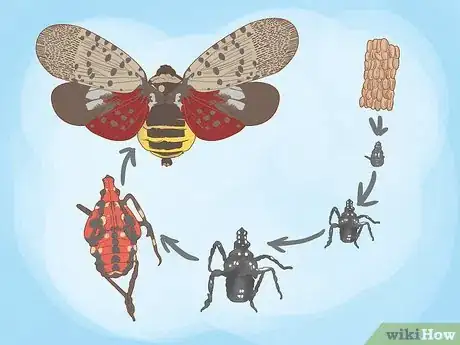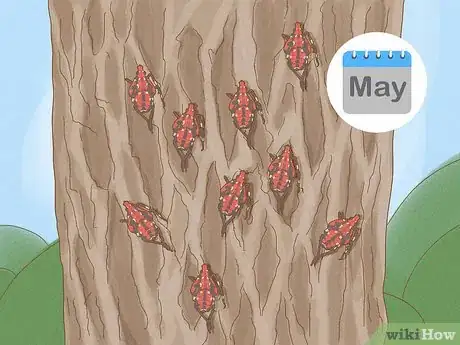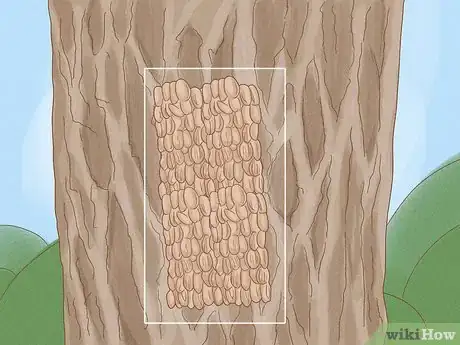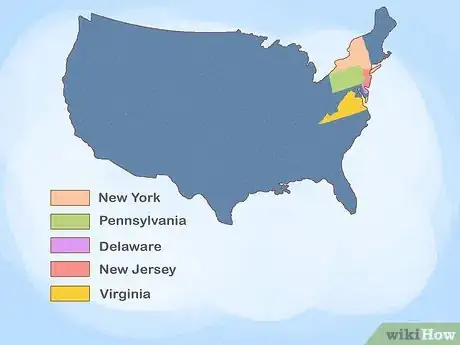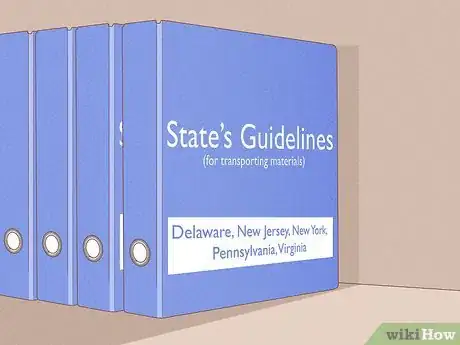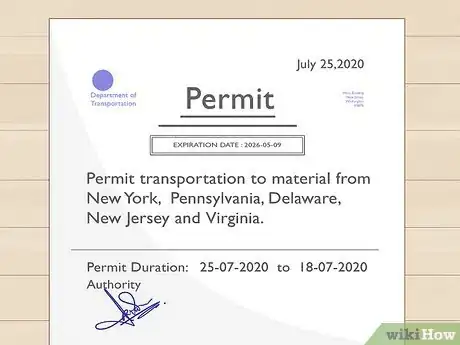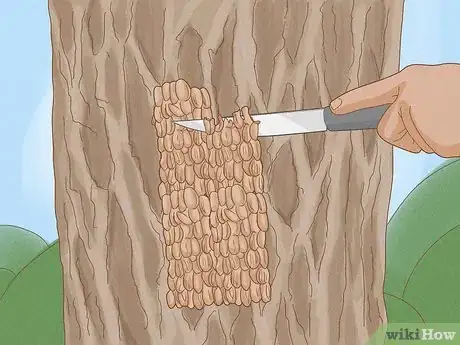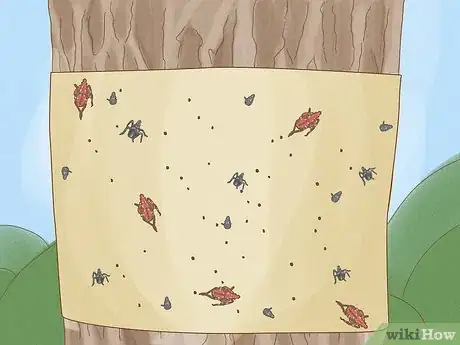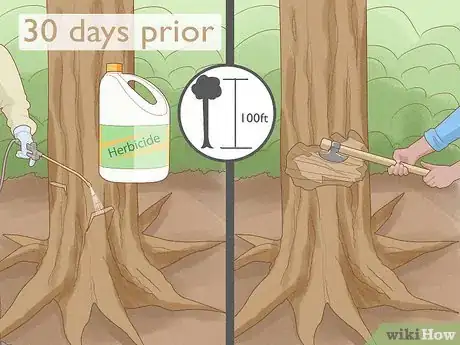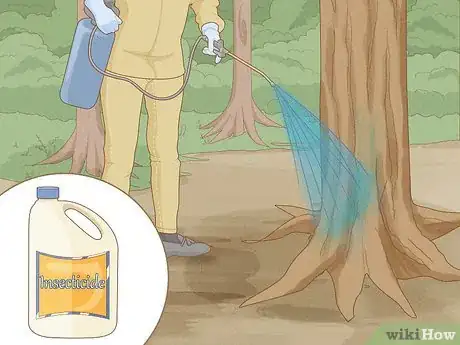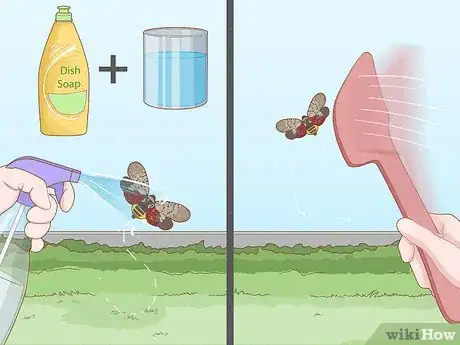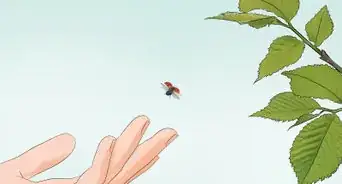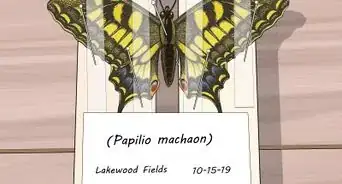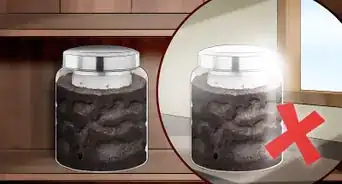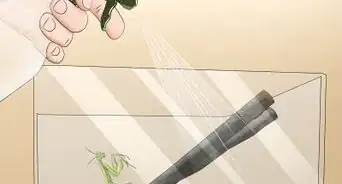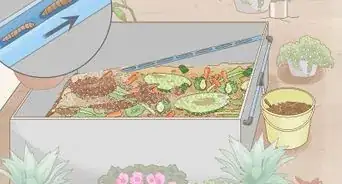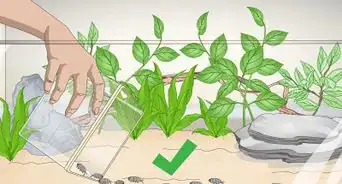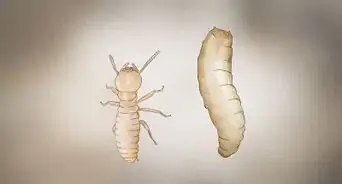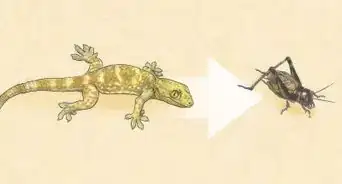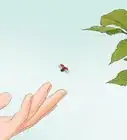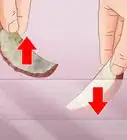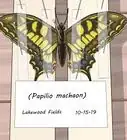wikiHow is a “wiki,” similar to Wikipedia, which means that many of our articles are co-written by multiple authors. To create this article, 12 people, some anonymous, worked to edit and improve it over time.
There are 12 references cited in this article, which can be found at the bottom of the page.
This article has been viewed 28,627 times.
Learn more...
Since 2014, the Mid-Atlantic region has been fighting an invasive insect called the Spotted Lanternfly. Indigenous to China and Vietnam, the Spotted Lanternfly was first discovered in Berks County, Pennsylvania and has recently been found in New Jersey, Delaware, Virginia, and New York.[1] The Spotted Lanternfly feeds on fruit trees, hardwood trees, grape vines, and pine trees, posing a threat to the farming and logging industry in the affected areas.[2]
Steps
Identifying a Spotted Lanternfly
-
1Know the life cycles of the Spotted Lanternfly (SLF). Although it is called a fly and resembles a moth, the SLF is a Hemiptera, or true bug, species Lycorma delicatula. The SLF lays eggs beginning in September in host trees including: Tree of Heaven, its preferred host, fruit trees, grape vines, and pine trees. The eggs overwinter and hatch beginning in May.[3] Immature SLFs (nymphs) undergo four stages, known as instars. These nymphs have no wings and can be readily removed from the host plant.
-
2Know the appearance of immature SLFs. Nymphs start appearing in May and go through the stages of development until reaching the adult stage around July. Removing the immature bugs is easier than destroying adults and can prevent damage to plants and trees.Advertisement
-
3Know the appearance of SLF egg masses. Spotted Lanternflies can lay egg masses on any surface, including trees, plants, outdoor equipment, and vehicles. The egg masses are usually tan/brown in color, often resembling tree bark.
Stopping the Spread of Spotted Lanternflies
-
1Determine if you live in a quarantined area. As of June 2019, several states have issued restrictions for transporting items from an area quarantined for SLFs.
- Delaware. Northern New Castle County has issued restrictions for transporting material potentially harboring SLF eggs in these zip codes: 19702, 19703, 19707, 19711, 19801, 19802, 19803, 19805, 19807, 19809, 19810.[4]
- New Jersey. Quarantines have been issued in Warren, Hunterdon, and Mercer Counties.[5]
- New York. The state of New York restricts the transport of certain goods originating from New Jersey, Pennsylvania, Delaware, and Virginia.[6]
- Pennsylvania. Berks, Bucks, Carbon, Chester, Dauphin, Delaware, Lancaster, Lebanon, Lehigh, Monroe, Montgomery, Northampton, Philadelphia, and Schuylkill Counties are under quarantine.[7]
- Virginia. Frederick County and the city of Winchester are under quarantine.[8]
-
2Follow your state's guidelines for transporting material from a quarantined area.
- Delaware. Residents should look for egg masses and immature SLFs from April to June, and destroy any mature SLFs they find. Business and government agencies must obtain a permit for moving material from the restricted areas.[9]
- New Jersey. Businesses or individuals transporting material to or from the New Jersey or Pennsylvania quarantined areas must obtain a permit.[10]
- New York. The state of New York requires a certificate of inspection for the transport of plants, trees, agricultural products, and other potentially infested items from the SLF impacted states.
- Pennsylvania. Pennsylvania requires businesses transporting material to or from the quarantined counties to have a permit.
- Virginia. Business in Frederick County and the city of Winchester are required to have a permit to transport a variety of items from those quarantined areas.[11]
-
3Obtain a permit to transport material. States affected by a quarantine usually require business to take a course in handling Spotted Lanternflies and pass an exam to receive a permit. You can find the requirements for each individual state on their agricultural department websites.
- Delaware. Delaware has partnered with Pennsylvania to provide a training course and exam.[12] Pennsylvania will award a permit good for one year upon successful completion.
- New Jersey. New Jersey will accept a permit issued by the Pennsylvania Department of Agriculture.[13]
- New York. New York has collaborated with other impacted states and requires documentation that any traveler transporting material to or from a quarantined area have documentation listing the origin and destination of any items they are carrying.
- Pennsylvania. The Pennsylvania Department of Agriculture has made available a free, two-hour online course that meets the requirements of all states affected by the SLF.
- Virginia. The Virginia Department offers an online course for $6.00. Applicants can receive a permit upon successful completion of the course, and then submitting an application for the permit.
Eradicating Spotted Lanternflies
-
1Destroy the egg masses. Check hard surfaces such as trees, and cement blocks for egg masses. You can scrape them off with a plastic card or putty knife, and place them in a container filled with rubbing alcohol or hand sanitizer.
-
2Band host trees. Newly hatched nymphs walk up the host plant to find food and can be trapped by placing tape around the tree sticky side out. To avoid trapping small animals and friendly insects, use as narrow a band as practical.
-
3Eliminate host trees. The SLF's preferred host tree is the Tree of Heaven, an invasive tree that can reach up to 100 feet tall. You will need to apply herbicide to the tree thirty days prior to removal to prevent new growth from the stump.[14]
-
4Apply insecticide to host trees. Insecticides can be applied to the bark of a tree to kill insect pests on contact, or by introducing the insecticide to the host tree's system. This can be done by spraying the tree, injecting the insecticide into the tree, or as a soil drench. The Penn State Extension has a list of insecticides used for SLF control.[15] Keep in mind that these chemicals are toxic, and be sure to follow directions to prevent any unintended harm. You may want to hire a tree care specialist to treat the plants professionally.
- Apply insecticide to tree bark. Some contact insecticides are available at home and garden stores. You can apply contact insecticides to the tree trunk or directly on individual leaves.
- Apply systemic insecticide to the soil surrounding the tree. Host plants will absorb the insecticide through their root system. Systemic insecticides work best during the tree's growing season, usually May through September.
- Inject systemic insecticide into the tree. This must be done by a tree care professional, who will use specialized equipment to inject the tree.
-
5Destroy individual insects. If you spot an adult Lanternfly, it is recommended you should try to kill it if possible. The Lanternfly is not poisonous and will not bite or sting if disturbed.
- Crush or swat insects. If you can reach the insect, stepping on or swatting it is the most effective and environmentally friendly way to kill the insect.
- Spray insects. If you encounter one or two Spotted Lanternflies, spray them with a solution of dish soap and water. Do not try to spray the insect with a toxic substance like lighter fluid or bleach, as this is likely to do more harm than good.
References
- ↑ http://ccecolumbiagreene.org/natural-resources/invasive-nuisance-species/invasive-pests/spotted-lanternfly
- ↑ https://www.invasivespeciesinfo.gov/profile/spotted-lanternfly
- ↑ https://ag.umass.edu/landscape/fact-sheets/spotted-lanternfly
- ↑ https://agriculture.delaware.gov/plant-industries/spotted-lanternfly/
- ↑ https://www.nj.gov/agriculture/divisions/pi/prog/spottedlanternfly.html
- ↑ https://www.growingproduce.com/crop-protection/insect-control/new-york-enacts-spotted-lanternfly-quarantine/
- ↑ https://www.pennlive.com/life/2019/03/spotted-lanternfly-quarantine-zone-expanded-to-dauphin-county.html
- ↑ https://www.growingproduce.com/crop-protection/insect-control/new-york-enacts-spotted-lanternfly-quarantine/
- ↑ https://agriculture.delaware.gov/plant-industries/spotted-lanternfly/
- ↑ https://plant-pest-advisory.rutgers.edu/does-my-business-need-a-spotted-lanternfly-permit/
- ↑ https://www.winchesterstar.com/winchester_star/frederick-county-quarantined-to-prevent-spotted-lanternfly-spread/article_657e1913-deb5-52fc-b798-23b0d6ba0a92.html
- ↑ https://extension.psu.edu/spotted-lanternfly-permit-training
- ↑ https://www.state.nj.us/agriculture/divisions/pi/prog/spottedlanternfly.html
- ↑ https://extension.psu.edu/spotted-lanternfly-management-guide
- ↑ https://extension.psu.edu/spotted-lanternfly-management-guide
